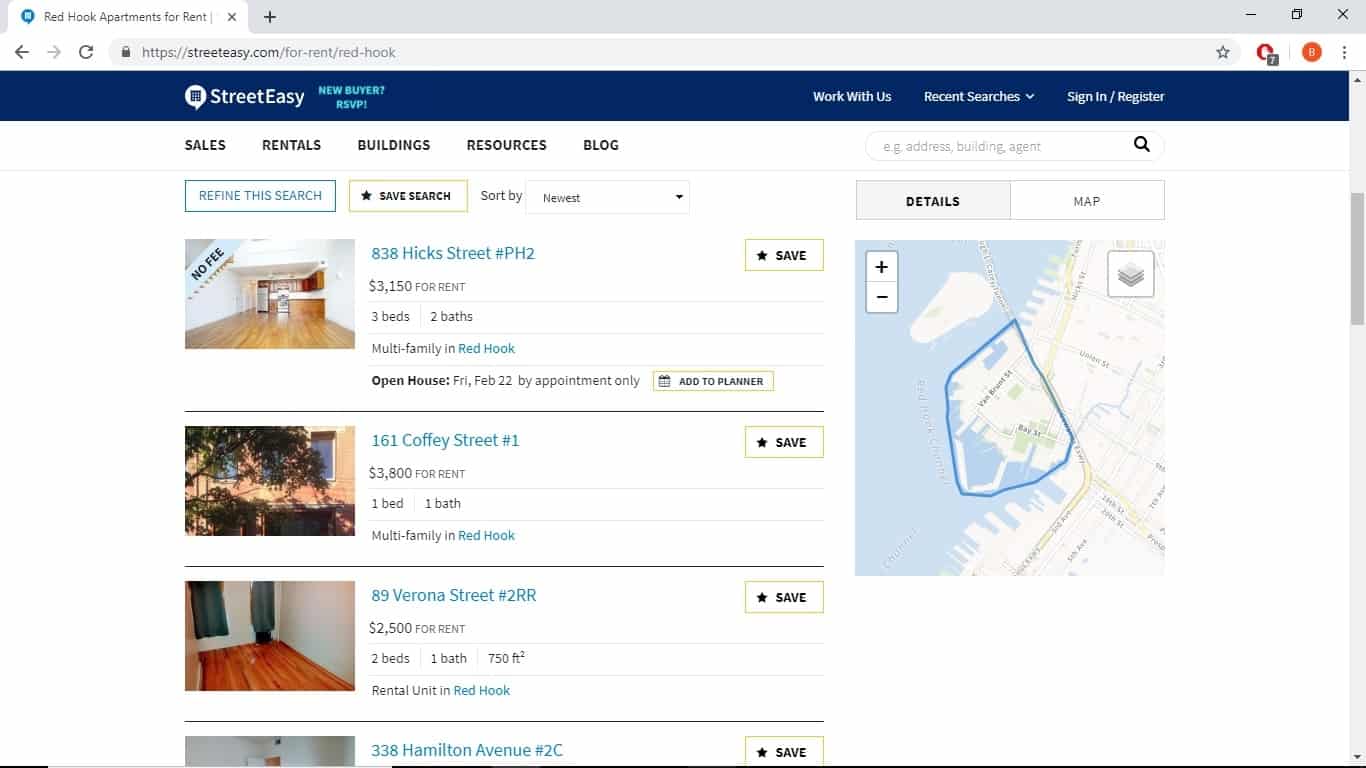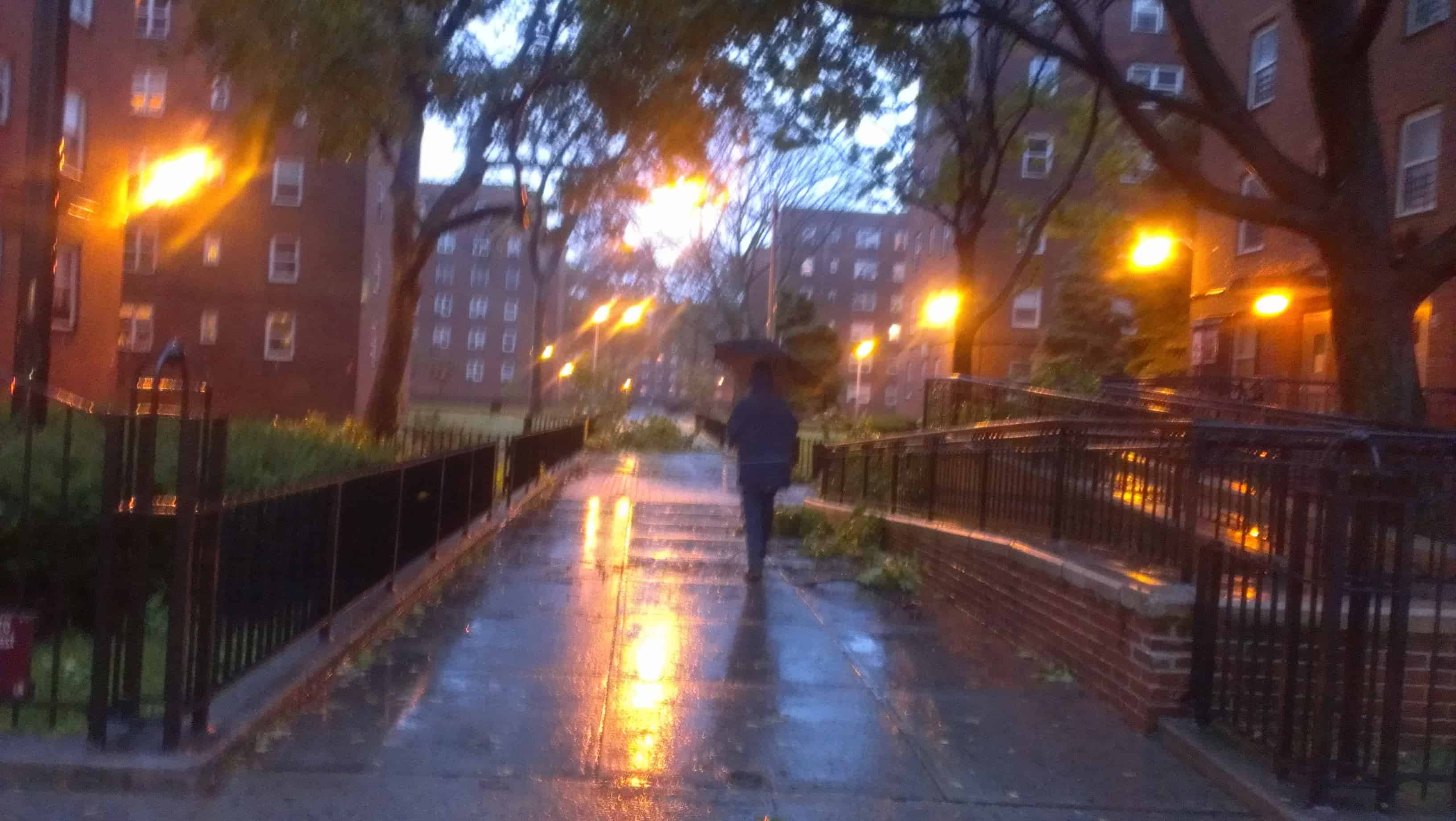In late January, the website StreetEasy published a study (of sorts) that determined “The 10 Healthiest Neighborhoods in NYC.” To the surprise of many, Red Hook earned the top spot on the list.
StreetEasy is a real estate database that lists New York City properties for sale or rent. It is not a medical authority.
Its criteria for neighborhood health did not seek to take into account the actual health of residents: rates for disease, obesity, or mental illness played no part in the analysis. Instead, StreetEasy used a formula based on real estate amenities, consumer habits, and civic infrastructure. The data came from its own archives, with additional information from Seamless (the food-ordering service), Yelp (the crowd-sourced review platform), and NYC Open Data (a public catalogue of facts and figures from city agencies).
StreetEasy’s concern extended to four factors: the “share of apartments in buildings with bike rooms, gyms and smoke-free policies on StreetEasy”; the “number of restaurants that fulfilled the highest amount of healthy food orders on Seamless”; the “number of gyms, fitness studios, pools, doctor’s offices, and health and wellness facilities on Yelp”; and “the number of bike lanes, public parks, community gardens, recreation centers, sports fields, nature areas and farmer’s markets, as found via NYC Open Data.”
According to StreetEasy, Red Hook boasts “the most public park space per capita,” but the study doesn’t acknowledge that lead contamination has closed the area’s ballfields, which continue to await remediation. Additionally, the neighborhood has “the second-highest number of bike lanes per capita in the whole city,” but this statistic arguably owes more to Red Hook’s unusually low population density than to a plethora of bike lanes, which exist on Columbia Street, Imlay Street, and small segments of Beard Street and Halleck Street near IKEA. In truth, Red Hook’s quaint cobblestones can make life a challenge on a road bike.
With a transparently worthless methodology (“Restaurants in the area also receive twice the orders for brown rice as for white rice”), the StreetEasy neighborhood health evaluation registers as disposable blog content, not as scientific inquiry. How many people in Red Hook even use yuppie food-delivery apps like Seamless? Still, the New York Times and Forbes both noticed StreetEasy’s project and repeated its findings.
In December, the academic medical center NYU Langone published its own health assessment for Red Hook, which it had deemed “an under-resourced and medically underserved community.” NYU Langone’s polls pointed in particular to the local problem of asthma, exacerbated by mold, unreliable heating, and vermin infestation in the Red Hook Houses.
A 2009 survey by the nonprofit Red Hook Initiative found that 26 percent of Red Hook Houses residents suffered from asthma (compared to five percent citywide), and 18 percent had diabetes (compared to eight percent citywide). In 2014, these residents lost their nearest hospital when New York State shuttered Long Island College Hospital.
Last year, Public Advocate Letitia James put NYCHA at the top of her annual Worst Landlords Watchlist, thanks in large part to its failure to protect children from the dangers of lead paint. The list noted that, of all the NYCHA developments, the Red Hook Houses had the greatest need for repairs.
By NYCHA’s count, 6,290 people live in the Red Hook Houses. Per the U.S. Census Bureau, the median income in the Houses, which constitute their own census tract, is $14,229. According to the University of California, San Francisco, adults who live below the poverty line have lifespans seven to eight years shorter than those who have incomes four or more times the federal poverty level.
 As of this writing, StreetEasy has 20 apartments listed for rent in Red Hook; the average rent is $3,670. It also lists 15 residential properties for sale, of which the cheapest costs $1,400,000. Its neighborhood guide states that “Red Hook is unlike any other neighborhood in the city. No place else will you find its unpretentious mix of Brooklyn artist chic and decaying maritime infrastructure. . . . Red Hook brims with creativity. The neighborhood is full of unexpected entrepreneurship and innovation.”
As of this writing, StreetEasy has 20 apartments listed for rent in Red Hook; the average rent is $3,670. It also lists 15 residential properties for sale, of which the cheapest costs $1,400,000. Its neighborhood guide states that “Red Hook is unlike any other neighborhood in the city. No place else will you find its unpretentious mix of Brooklyn artist chic and decaying maritime infrastructure. . . . Red Hook brims with creativity. The neighborhood is full of unexpected entrepreneurship and innovation.”
True enough. StreetEasy mentions Red Hook’s “small-town charm,” “quiet streets,” and “quirky and community-focused restaurants,” calling the neighborhood “rugged and beautiful.” It doesn’t mention NYCHA.
The real estate industry – the developers, the landlords, and the brokers, who post their listings on StreetEasy – benefits by putting forth an image of Red Hook that erases the Red Hook Houses. In the popular imagination it’s already begun to take hold.
For instance, the official synopsis for the 2018 indie dramedy Hearts Beat Loud identifies its setting as “the hip Brooklyn neighborhood of Red Hook.” The movie contains plentiful shots of the waterfront at sunset, of the Civil War-era warehouses, of the storefronts on Van Brunt Street, but somehow the camera never glimpses the Red Hook Houses. The only black characters are biracial lesbian hipster teens who love alternative rock. Even the patrons at Sunny Bar’s have morphed exclusively into beautiful twentysomethings, with the exceptions of actors Nick Offerman and Toni Colette. There’s money in a place like this.
Say it again and again: the majority of Red Hook residents live in the Red Hook Houses. StreetEasy isn’t likely to know much about a neighborhood where public housing units vastly outnumber private apartments. But this much should be self-evident: no one can say that Red Hook is a healthy community until the health needs of Red Hook Houses residents have been met.










One Comment
It’s because they wouldn’t be able to sell their million dollar homes if they say ‘oh, and you’ll have to bike/drive thru one of the largest public housing complexes with decaying infrastructure before you go home to your beautiful newly constructed building, the likes of which none of those people will ever be able to afford or even look at, just blocks from cobblestone streets, a waterfront, and charming little shops. Just ignore the poverty before getting to those strips of charm and wealth.’